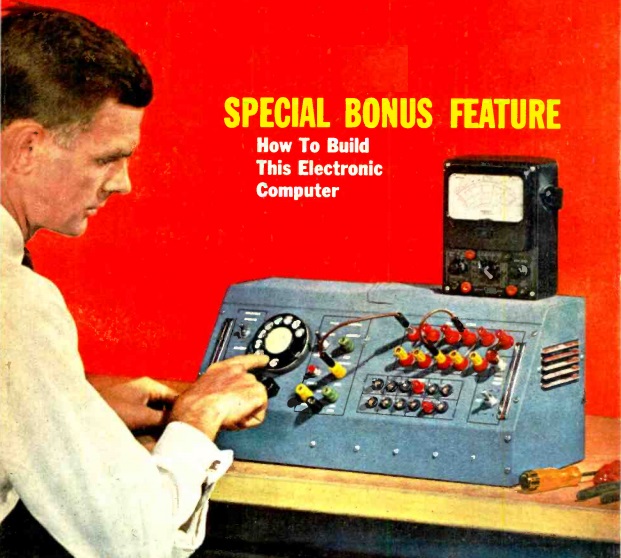 Sixty years ago, the gentleman shown here was undoubtedly the first one on his block to own a personal computer, since he built this one, as shown in the January 1960 issue of Electronics Illustrated.
Sixty years ago, the gentleman shown here was undoubtedly the first one on his block to own a personal computer, since he built this one, as shown in the January 1960 issue of Electronics Illustrated.
The device was essentially a binary counter. The pulses from the telephone dial went to a series of six flip-flop circuits, and the total was shown in binary with the top row of lights. So to add, you just dial in the numbers you want to add, and then read the sum (in binary) on the lights.
Subtraction was also possible, since subtraction of a number was the equivalent of addition of the number’s complement. In this case, since the computer handles 6 digit binary numbers, it can display 0-63. Thus, the complement of a number is 64 minus that number. The bottom row of lights showed the complement of the number shown in the top row. (For example, the complement of 110000 is 001111.)
Multiplication was possible by repeatedly adding, and division amounted to repeatedly adding and seeing how many times the addition was necessary.
The author does conclude by noting that the computer was intended as a demonstration model. Accordingly, it had little practical use “unless the builder takes the time to study some of the readily available literature on computer techniques and mathematics. I do not recommend that anyone not familiar with high school mathematics attempt to construct it, as it will merely become a toy of limited value.”
